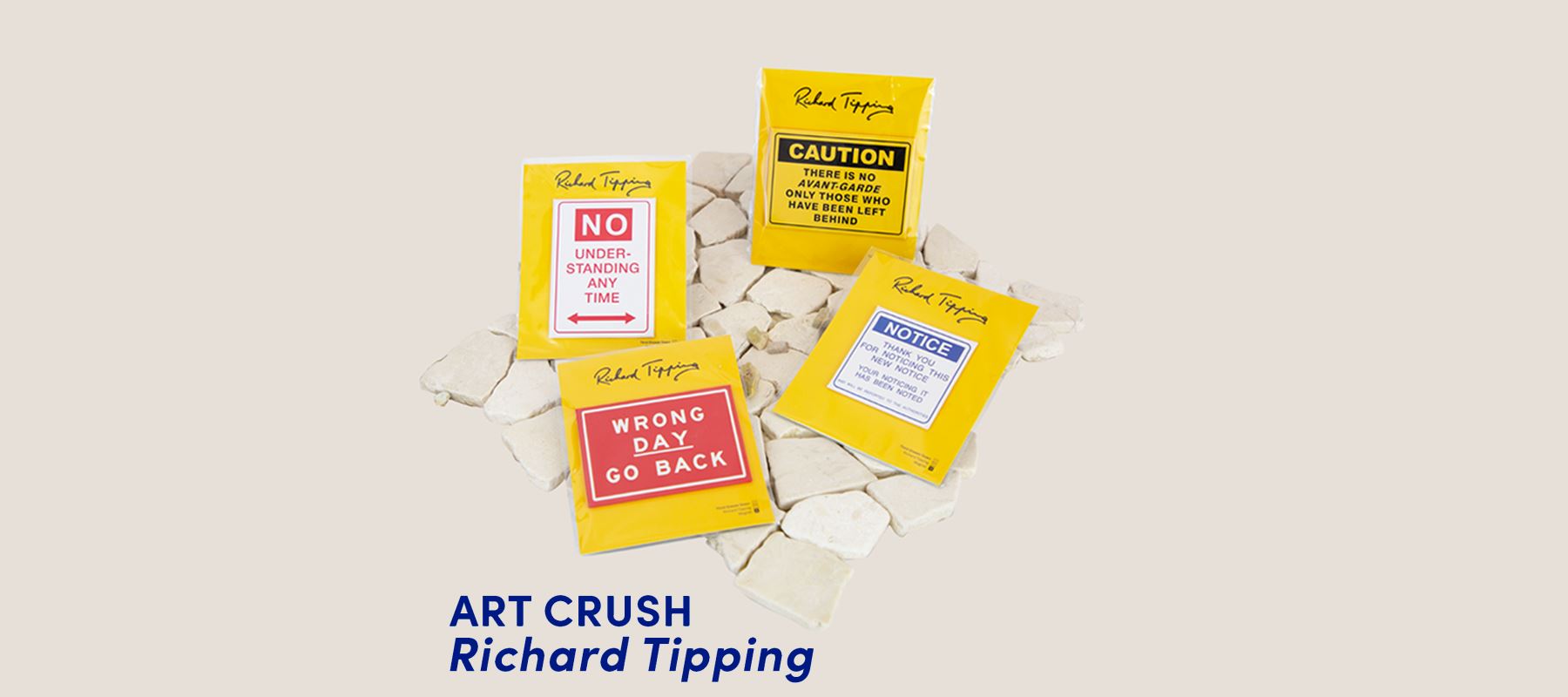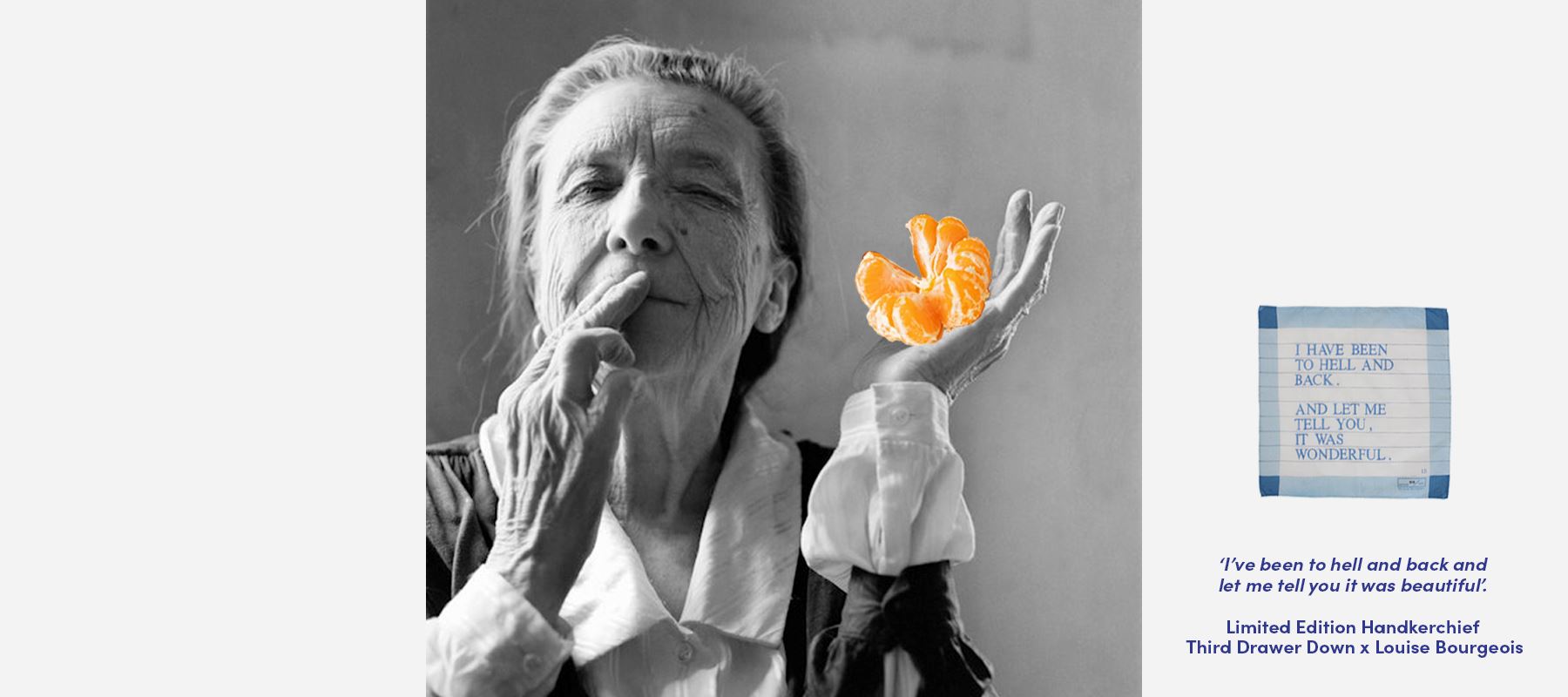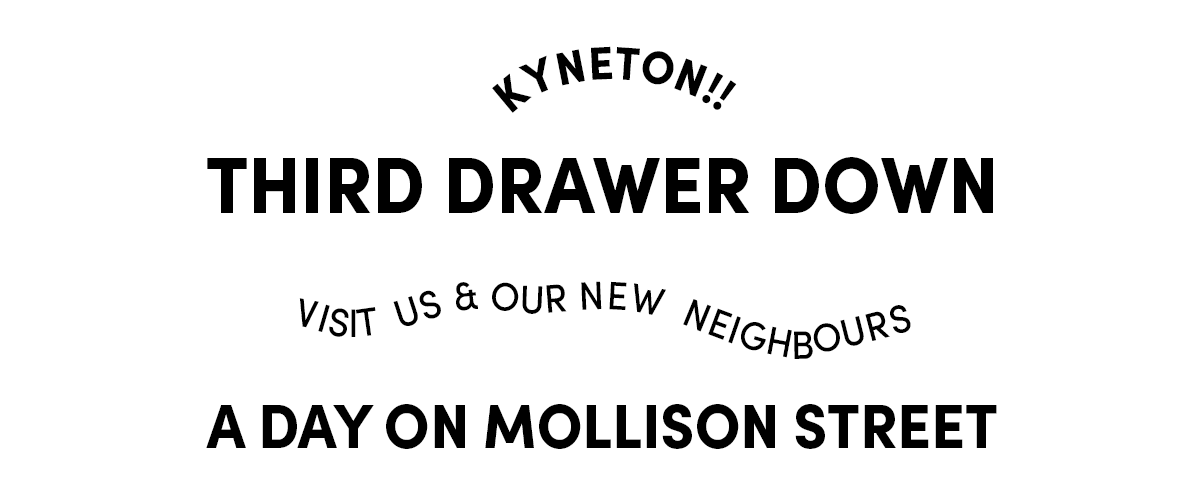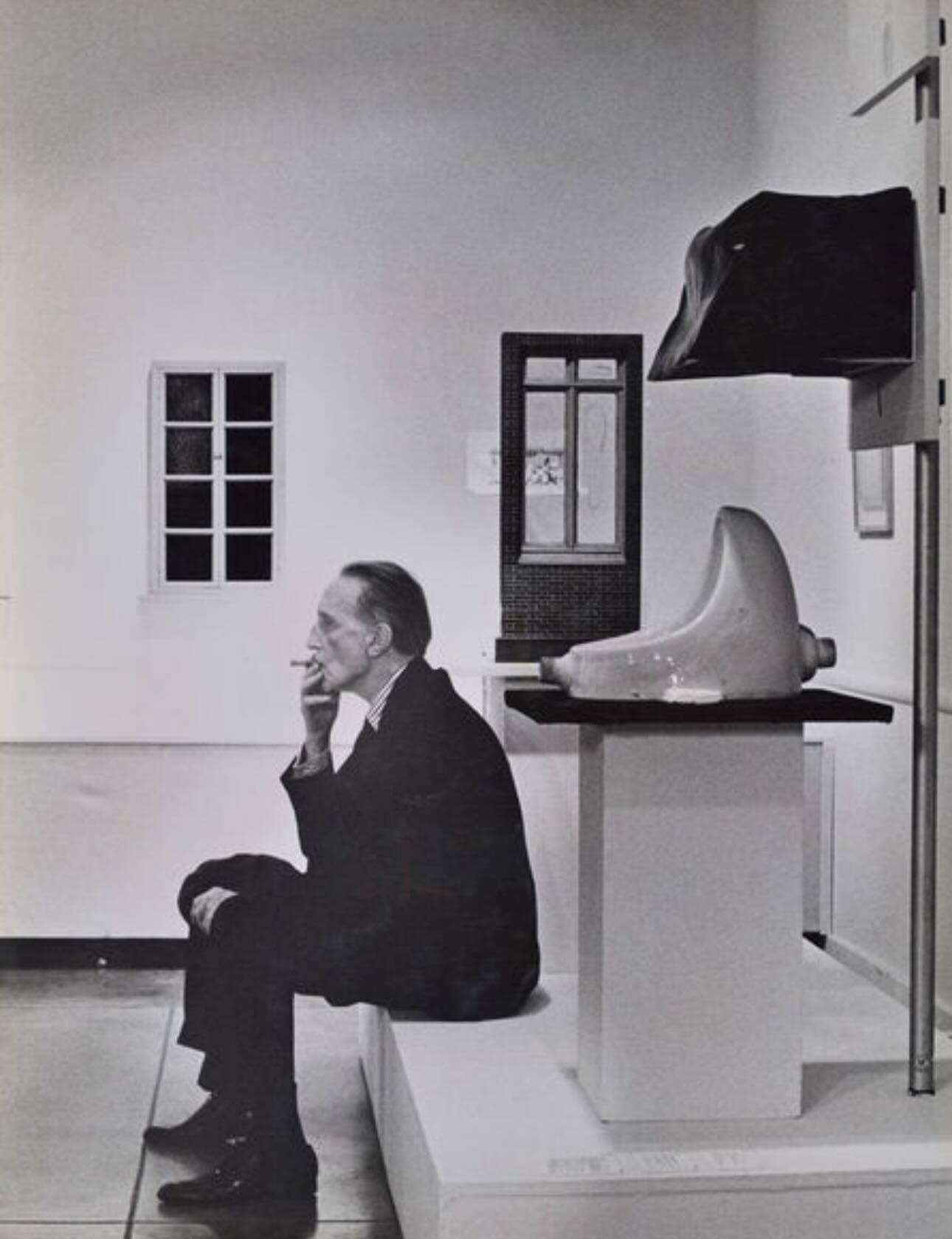Artcrush 与 Richard Tipping 的问答

我们最新加入 Artcrush 的是澳大利亚诗人兼艺术家理查德·蒂平 (Richard Tipping)。他风趣幽默,我们很喜欢认识蒂平,了解他的创作过程和标志性作品。

我们有幸与理查德·蒂平 (Richard Tipping) 合作,他以迷人的视觉诗歌和文字艺术而闻名。蒂平现居澳大利亚,他的艺术标志、文字雕塑、颠覆性广告图形以及引人注目的大型公共艺术作品(包括永久和临时作品)都给人留下了不可磨灭的印记。
蒂平的艺术之旅始于 20 世纪 70 年代,当时他开始用镜头捕捉公共标识中的讽刺和怪癖,经常重塑这些标识以传达诗意的信息。他广受好评的作品《澳大利亚标识》(1982 年)展示了许多令人着迷的标识异常。值得注意的是,他的标志性作品《不理解》现藏于澳大利亚国家美术馆,体现了他对公共手语的精通。
我们与理查德进行了交谈,了解了很多有关他的作品背后的意义以及他创作这种标志性艺术的过程!
《Third Drawer Down》:请告诉我们您为什么想通过《Third Drawer Down》来实现这个特定的视觉创意?
理查德·蒂平
No King 拿起一个温和的“禁止吸烟”标志(之所以温和,是因为它包含一个预先的“谢谢”),将香烟从“禁止”的红色圆圈中取出,以及吸烟的“Smo”。突然间,信息就变成了“NO KING”:广泛反对皇室,任何皇室,带有礼貌的刺痛。
第三个抽屉:你的作品通常都是雕塑,位置和规模如何影响你的创作过程?它们是否会影响你作品的最终结果?
理查德·蒂平大型公共艺术,无论是永久性作品还是临时性作品,都很难获得,而且实现它们必然既艰巨又具有挑战性,因为委托委员会、策展人、工程师、制造商和安装人员都有自己的位置。我所知道的一切都来自作为纪录片制作人的经验,你必须身兼数职,同时专注于期望的结果。
袋鼠是一枚珐琅徽章,代表着一个由两部分组成的艺术标志,袋鼠从标志中跳出来,用典型的澳大利亚方式说着“Ooroo”,意思是“待会见”。较大的标志有三米宽,立在一根五米长的柱子上,这是一个巨大的雕塑,曾在悉尼展出过几次,现在正在寻找国家标志的归属。 
Richard Tipping警告先锋派使用“警告”标志的标准模板来颠覆“先锋派”作为过时概念的观念。确实,我们无法轻易分辨哪种艺术是“领先的”,因为只有历史才能决定长远而言什么是重要的;但出乎意料的是,“只有那些被遗弃的人”才会被挑出来进行讽刺观察。
第三个抽屉你怎样向人们描述你所做的事情?
Richard Tipping我的画廊位于新南威尔士州的一个小乡村城市,名为 WordXimage,这几乎描述了我的主要兴趣。在图像和文字之间的沃土上工作(从视觉具体诗歌到文本雕塑和颠覆性广告图形),我收获了惊喜。即使反复观看,这些也需要对心灵产生影响。
第三个抽屉你的作品颠覆了平凡,赋予语言以重量。你能告诉我们一位令你惊讶或让你措手不及的作家或诗人吗?
理查德·蒂平马塞尔·杜尚的现成品包括将现有物品以意想不到的组合方式制成艺术品:例如,《自行车车轮》(1913 年)将标准前轮和前叉放在凳子上。用杜尚的话来说,袋鼠可以描述为“调整后的现成品”,因为通过删除袋鼠图形并添加一个单词“ooroo”,现有符号的含义发生了改变。
第三个抽屉如下:我们商店最受欢迎的产品有哪些?

第三个抽屉您能给我们讲讲您家里最喜欢的一件物品的故事吗?
理查德·蒂平我家里收藏了许多奇怪的东西,还有一些我欣赏的艺术家的艺术作品。我最喜欢的是苏格兰艺术家伊恩·汉密尔顿·芬莱于 1970 年创作的一幅丝网版画,上面用细小的文字优雅地写道:“夜幕降临,他们将缝制蓝色的帆。”对我来说,这幅画具有以视觉形式体现的令人难忘的文字的力量。




